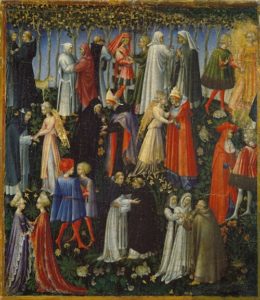A month of singular vision
by Mika Provata-Carlone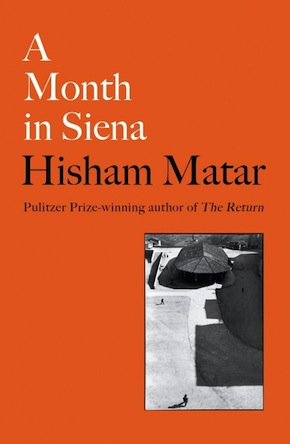
“A dazzling exploration of art’s impact on his life and writing, and a moving contemplation of grief.” Financial Times
Hisham Matar is undeniably a remarkable man, with a talent for unusual journeys and their tales. A gifted storyteller, he excels in that rare balancing act between the personal and the universal, the minutely concrete and the sublimely abstract. He loves to explore the terra incognita between permanence and transience, presence and errantry, past and present. Like a hero-wanderer of old, Matar has already made one formidable Odyssean journey of return, complete with monsters and the lure of false paradises: after nearly three decades in political exile, he travelled back to his homeland in search of traces of his father, who was kidnapped by the Gaddafi regime when Matar was 19. Matar’s father was taken back to Libya, where he was “imprisoned and gradually, like salt dissolving in water, was made to vanish.” The story of the inexorable presence of that vanishing informs and transfuses everything that Matar has ever written, his way of relating to and perceiving the world. It was the unflinching subject of his 2016 memoir The Return, and lies persistently, redolently, at the heart of his latest book of remembrance and reflection, A Month in Siena.
A Month in Siena is a striking book. It is a lyrical, intimately personal essay on identity and consciousness, as well as the platform for a highly complex engagement with several questions, literary, aesthetic, cultural, historical and social, all of which lie at the heart of Matar’s project as regards not only writing and fiction, but also the forging of a reflective vernacular for what he intends to be a radical new discourse for critical thinking and understanding. Like Dante in Florence, Matar finds in Siena the vital material for creating an all-encompassing metaphor, philosophical, historical, ontological: “I was not so much inside the city but an idea, an allegory that was lending itself, like an old and well-tailored garment, to my needs.” In Sienese art in particular, he identifies the vital elements for his own Commedia of both past and present, as well as finding what he calls art’s “gesture of hope and also of desire.” If The Return related the katabasis into a darkness of private and historical trauma and Inferno, an epic journey of nostalgia and an impassioned lament for a father and a fatherland now lost, A Month in Siena is positioned to be Matar’s meditation on Purgatorio, before any Paradiso can be envisioned as possible. It is a highly personal journey and grief, which he transforms into an intensely charged cultural and historical narrative, a determinedly syncretic, and yet singularly eclectic metatextual experience. As he writes, he “emerged from that long period of concentrated work [on The Return] blinking into the light” – an unmistakable echo of the last verses of the Inferno. He has come through the experience ready to see the stars once more, and, especially, to scrutinise them, affirm or dismiss their role as the guiding points of his compass: “I knew then that I had come to Siena not only to look at paintings. I had also come to grieve alone, to consider the new terrain and to work out how I might continue from here.” Matar’s month in Siena was transformative, he has said elsewhere, not simply as a private time of askesis of the mind, as an exercise in the will to continue after a terminus, but especially as the space for an encounter between the public persona and the consciousness of a much greater, inalienably ingrained identity.
Echoing that state of neither here nor there, of chaos before a new order, Siena, when he finally arrives after a long, circuitous process of yearning and postponement, is ‘monstrously beautiful’.”
Matar’s engagement with Sienese art dates back to the time of his father’s disappearance. It is a story full of longing, but also suffused with a determination to confront and question, which transcends the personal history. The Sienese paintings he came to look at, at length and fixedly, in the National Gallery in London “became a mental as well as a physical location in my life.” They provided a haven for reflection, but also the tools for a critical translation of perception and experience in the sense of transposed contexts or objective correlatives; they allowed for a more programmatic analysis regarding, essentially, being and nothingness, identity and otherness, belonging and alienation: “They seemed in their often symmetrical structure and direct gaze to be an affront, a confrontation. They were foreign in ways that the other pictures I was interested in then [Velásquez, Manet] were not.” They are, like Dante’s purgatory, an in-between state of neither nor, a suspended moment in time and fate before the affirmation to come. For Matar, in their “cloistered world of Christian codes… they stood alone, neither Byzantine nor of the Renaissance, an anomaly between chapters, like the orchestra tuning its strings in the interval.” Echoing that state of neither here nor there, of chaos before a new order, Siena, when he finally arrives after a long, circuitous process of yearning and postponement, is “monstrously beautiful”, a juxtaposition of attributes that has a key role to play in what follows.
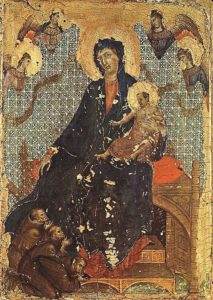
Madonna dei Francescani by Duccio di Buoninsegna, c. 1300. Pinacoteca Nazionale, Siena / Web Gallery of Art
Matar will construct his Sienese sojourn around particular centres of gravity and attention: frescoes in churches and palazzi, paintings in museums, private and public architecture and urban design, the value of art in general, of history in particular, and miniature portraits of those among the city’s inhabitants that he chooses to describe and meet: quaint vignettes of a Nigerian pensioner finally able to acquire an Italian passport, a Jordanian family of migrants who open their flat to him in what Matar extols as the special humanity of his people, a couple of museum guards who offer him a stool so he can sit and stare at his paintings in leisure and comfort. What emerges is a stream of singularly sophisticated philosophical consciousness, a stroboscopic analysis that takes its impetus from a very dynamic understanding of the aesthetic life, the life of the mind, and a writer’s need to write with what Matar has identified as a sense of duty. Ambrogio Lorenzetti and Duccio di Buoninsegna, Giovanni di Paolo, Caravaggio and Nicolas Poussin, create the stained-glass panorama through which Matar returns to some of the central themes in his writing, namely light, image, illumination or obfuscation, visual realism or ideological representation. In a 2014 essay on Virginia Woolf for The New Yorker, Matar had already prefigured the sharp, exultant close readings of light and shadows, of forms and ideas, of reality as it stares at us and the numinous, of revelations and apocalyptic visions – the key elements of thinking and of writing that he will make his very own markers of distinction.
In that essay, he argues that for a writer “what is required is the persistent need to envisage the world anew, to remake the self, or reorientate her, like a sitter adjusting her posture in order to gain a different view.” It is a process that will be at the heart of his project for a A Month in Siena, where light as metaphor, light as sight, light as insight, but also perhaps light as what obliterates vision, or serves as a relentless interrogator, dominate the narrative experience. Celebrated for capturing and distilling the mystical immanence of Christian revelation, the Sienese light acquires here a different, awesome quality, one of vastness, emptiness, depersonalised space and time. It embodies ambiguity and disillusionment, “the unknowable” and the “claustrophobic”, the “monstrously beautiful”. It creates both the juncture and disjunction of oneness and otherness, by evoking the light of another existence, of a different culture, of another world of belonging.
Italians are practically absent from their city, in an eerie act of depopulation or conceptual cleansing: ‘the fewer people I saw, the more engaging the city and the paintings became.'”
The strong sense of identity in Sienese painting brings an overwhelming sense of nostalgia for his father, for Libya, for things Arabic rather than European. The tension is particularly acute for Matar, given Italy’s occupation of Libya at the start of the 20th century, and the private narratives of those insiders-outsiders from Africa and the Middle East now living in Italy, with which he interlaces his own meditations on the city and its history. Both allow him to create stark contrasts between past and present, as well as the feeling that he is seeking not only beauty, metaphors, belonging, the words to speak both tragedy and healing, but more specifically the setting for a debate on accountability, historical memory and guilt, the presumed hierarchy of civilising orders, for cultural and national restitution and rehabilitation. He has said elsewhere of W.G. Sebald that he was the “inheritor of a dark history, interested in the shame of the progeny” – an observation that readers may feel Matar is applying collectively to all that is Western. In this context, Siena itself becomes insubstantial, immaterial, both in terms of its atemporal significance, but also in those of its critical insignificance as a Western topos. Indicatively, the emphasis is on the material culture of the past, the non-verbal pictorial narratives of the long-dead Sienese painters, the sublimated aura of a place and moment in time. Italians are practically absent from their city, in an eerie act of depopulation or conceptual cleansing: “the fewer people I saw, the more engaging the city and the paintings became,” we are told towards the end.
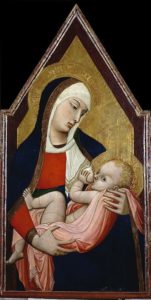
Madonna del Latte by Ambrogio Lorenzetti, c. 1325–48. Diocesan Museum of Holy Art, Siena / Google Art Project
As Matar ‘reads’ each of his chosen paintings, and these are unquestionably impressive readings of truly sublime masterpieces, the literary and aesthetic references and allusions become intensely elaborate and reflected, meticulously crafted, unyieldingly conceptual, even as they resonate with a highly eloquent, if aestheticised, poetic beauty. The strong historical register is an emphatic statement of alternative perspectives: Arab historians, essayists, writers from a methodically expurgated, a-historicised and homogenised Arab past, are summoned to provide what is presented as an overlooked parallel trail (the “unsaid” of the title of his essay on Woolf), but also to claim a space, a voice, agency and critical authority. It is a tense interplay between occident and orient, centres and margins, Islam and Christianity, which audaciously challenges stereotypes but also, often, factual premises. The emotive level is always deeply rooted in cultural and private memory and sentiment, in an archetypal ‘exilic’ identity, in a constant verbal arabesque of abstract figures and theorisations. The tone is chthonic, elemental, deeply grounded in primary experience, and in a patently idealised version of “the unadulterated people” – who are invariably non-Western and non-indigenous.
In one of the longer sections, entitled ‘The Problem of Faith’, Siena and the Black Death serve as an excuse for an elegy on Islamic literature and historiography. It takes the form of an atavistic memory and shared ancestral identity which overrides any separate cultural heritages and traditions within that sphere. Superlatives overflow in abundance, as do scathing criticisms of contemporary Christians, dismissed for their sectarianism and for trying to analyse or rationalise causes through a personal dialectics with God, even if the analysis was itself plagued at times by religious superstition. “The [Muslim] response was a deterministic one –[they] viewed the epidemic as a calamity… to be resisted and endured. It was not sent by an angry God, but rather decreed by fate, which governs the order of things.” Matar sees no oxymoron or contradiction in this statement, nor does he seek to understand the different relationship between humanity and God that Christianity envisioned. This in turn renders the authoritativeness of his art historical readings problematic – even philosophically, sociohistorically and theologically troubling in their reductionism and exclusionary bias.
Just as Siena (and Europe by extension) is a skeleton in Matar’s revisionist version of history, a mere relic, an abandoned ghost town to be inhabited by new souls and to be claimed as a new possession, a palimpsest anyone can write on without acknowledging, reading or understanding the texts that underlie each new layer of writing, so too are the Sienese paintings Matar examines stripped bare of their iconicity, their relationship to revelation, their ineffable communion with the sacred. Of Duccio’s Madonna dei Francescani he asserts that “this is an essential part of [its] power. It is far more interested in human life than it is in God” – a startling statement for Duccio’s vision of art as an essential way of relating with the divine through a sublime dialectics. Sienese art is superbly mystical, a breathtaking expression of Christian metaphysics, all the while achieving that transubstantiation of the human which makes it so uniquely beautiful. In Matar’s treatment, central examples of that art are repeatedly secularised, tamed to interpretative compliance, or, in turn, defamiliarised, perused through a fish-eye lens of “monstrously beautiful” otherness and exoticism. His exegetical readings are fiercely phatic, frequently quite disturbing, and not merely irreverent or provocative. The vision is slanted, skewed, determined to extract a single interpretation. An almost clinically obsessive, voyeuristic baring of the elements is intended to expose what is presented as the “outrageous”, “unsettling”, “cunning” fundamental substance and reality of the West. Mary and Jesus receive a particularly antagonistic treatment throughout, culminating in the almost vicious attack against Ambrogio Lorenzetti’s strikingly intimate, intensely and movingly human Madonna del Latte.
In Matar’s elegiac statement that “the subjective life of the observer is required in order to complete the picture”, one hears both Wallace Stevens’ Fifteen Ways of Looking At a Blackbird (Matar is very fond of Stevens), as well as Edward Said’s “participatory and collaborative, non-coercive” alternative to what he saw as the exclusionist system of Western perception and representation. “Only inside a book or in front of a painting can one truly be let into another’s perspective,” Matar declares, a statement resonating with the unmitigated invective that runs throughout A Month in Siena, again echoing Said’s concept of Orientalisation: each book, each painting Matar focuses on with such singular, almost psychoanalytic determination, becomes an opportunity for a ruthless anatomising of an amorphously defined, semantically surcharged, undifferentiated and depersonalised Western ideology and historical outlook. In his case, aesthetic intellectualisation replaces Said’s political one. The prose is incantational throughout, intricately spun, often resembling the double-vision of Islamic art: the exhilarating intensity of the microfocus and the hypnotically non-representational un-iconicity of the broader canvas, which subjugates the dialectical element to that undifferentiated, wholly unified pattern and oneness. In Orientalism Said famously lamented the “subtle and persistent Eurocentric prejudice against Arab-Islamic peoples and their culture” – breaking new ground for our examination of both history and conscience. Matar’s A Month in Siena is sadly, if eloquently, often an example of the reverse phenomenon, Occidentalism, whereby a “subtle and persistent Europhobic prejudice against both peoples and cultures” is affirmed uncritically, totally, and rather disingenuously.
Alluringly written and beautifully illustrated, A Month in Siena is a very tempting crossroads of diverging and converging paths – yet it is also a very troubling, dismaying encounter. A way to perhaps redeem one’s reading is to reflect on Matar’s mellifluous ruminations on Giovanni di Paolo’s Paradise: di Paolo’s painting “knows that what we wish for most, even more than paradise, is to be recognised; that regardless of how transformed and transfigured we might be by the passage, something of us might sustain and remain perceptible to those we have spent so long loving.” One inevitably wishes, at the turning of the very last page of A Month in Siena, that Matar had infused his book with that same “I and Thou” quality, that interpersonal engagement between both the human and the divine that he does not seem to have perceived in the paintings he has looked at with such care and for so long…
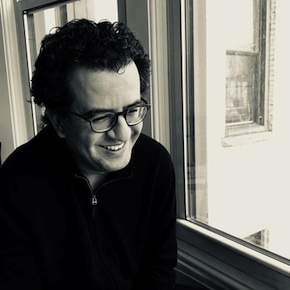 Hisham Matar was born in New York City to Libyan parents and spent his childhood first in Tripoli then in Cairo, and now lives in London. He is the author of the novels In the Country of Men and Anatomy of a Disappearance, and the memoir The Return. In the Country of Men was shortlisted for the Man Booker Prize, the Guardian First Book Award and the National Critics Book Circle Award and won six international literary awards. The Return won a Pulitzer Prize, the PEN/Jean Stein Book Award, the Folio Prize and was shortlisted for many other awards. A Month in Siena is published by Viking and Penguin Digital in hardback, eBook and audio download.
Hisham Matar was born in New York City to Libyan parents and spent his childhood first in Tripoli then in Cairo, and now lives in London. He is the author of the novels In the Country of Men and Anatomy of a Disappearance, and the memoir The Return. In the Country of Men was shortlisted for the Man Booker Prize, the Guardian First Book Award and the National Critics Book Circle Award and won six international literary awards. The Return won a Pulitzer Prize, the PEN/Jean Stein Book Award, the Folio Prize and was shortlisted for many other awards. A Month in Siena is published by Viking and Penguin Digital in hardback, eBook and audio download.
More info
hishammatar.com
@hishamjmatar
Mika Provata-Carlone is an independent scholar, translator, editor and illustrator, and a contributing editor to Bookanista. She has a doctorate from Princeton University and lives and works in London.

